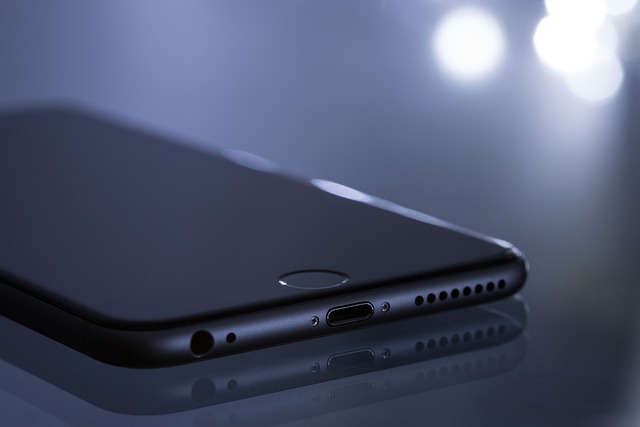If your iPhone is experiencing frequent lower battery levels, accelerated battery drain, or sudden shutdowns despite regular charging, these could be signs of its battery degrading. As batteries age, they lose the ability to hold a charge as effectively as before, which can manifest as a shorter usage time between charges and slower charging times. A replacement is often necessary to restore efficiency and prolong your iPhone's lifespan, enhancing its performance back to its initial standards. The process of replacing an iPhone battery is not just about quick fixes; it's a critical maintenance step that can prevent further wear on the device and maintain optimal functionality. By opting for an official Apple battery replacement, users can expect improved responsiveness, faster app launches, and a less dim screen, all contributing to a better overall user experience. This is a cost-effective solution that ensures your iPhone remains efficient and reliable over its usable life.
When your iPhone’s performance dips and its longevity on a charge becomes a gamble, it might be time to consider replacing your power source. This article outlines seven clear indicators that signal the need for an iPhone battery replacement. From recurrent power drains to unexpected shutdowns, we’ll guide you through each sign and what it means for your device’s overall functionality. Recognizing these cues early can save you from more significant issues down the line, ensuring your iPhone operates at its best.
- Recurrent Power Drains: Understanding the Signs You Need to Replace iPhone Battery
- Sluggish Performance: How a Weak Battery Can Slow Down Your iPhone
- Unresponsive Screen: The Relationship Between Battery Health and Display Responsiveness
- Frequent System Reboots: The Indicator of Battery Inefficiency in iPhones
Recurrent Power Drains: Understanding the Signs You Need to Replace iPhone Battery

If your iPhone is frequently displaying lower battery percentages than usual or draining faster than expected, it might be time to consider a replacement iPhone battery. This phenomenon, known as power drain, can be attributed to various factors including chemical degradation of the battery cells. Over time, the battery’s ability to hold a charge diminishes, leading to a noticeable decrease in performance. Another sign is when your device doesn’t hold a charge for as long as it used to, even after a full recharge. This inconsistency in power retention is a clear indicator that the battery may have reached its optimal lifespan and requires replacement. Additionally, if your iPhone shuts down unexpectedly or takes significantly longer to recharge than it did when new, these are also strong signals that the battery’s health has deteriorated. Addressing these issues promptly can prevent further strain on your device and ensure optimal performance. Replacing an aging battery with a new one can refresh your iPhone’s lifespan, making it as efficient as when it was first in your hands.
Sluggish Performance: How a Weak Battery Can Slow Down Your iPhone

When your iPhone begins to lag during routine tasks or struggles to hold a charge, it might be more than just an app that needs optimization—it could indicate that your power source is on its last legs. A weakening battery is a common issue that can lead to sluggish performance. As the battery’s capacity diminishes, it may not deliver enough power to keep your device running at peak efficiency. This can manifest as slow app launches, delayed responses when typing, or even a dimmer screen than usual. If you notice these behaviors frequently, replacing your iPhone battery could significantly enhance your user experience. In fact, an official Apple battery replacement can restore the original performance of your device by providing a fully charged battery that maintains its charge longer and performs better throughout the day. To prolong your iPhone’s lifespan and ensure optimal functionality, consider a battery replacement if you suspect it’s the culprit behind your device’s lethargy. It’s an investment in the efficiency and longevity of your iPhone.
Unresponsive Screen: The Relationship Between Battery Health and Display Responsiveness

When an iPhone’s screen becomes unresponsive or sluggish to react, it often signals a decline in its battery health. As the battery ages, it loses the ability to hold and supply charge as efficiently as when it was new. This diminished performance can manifest as a laggy or unresponsive display, which is not merely an issue of screen sensitivity but a reflection of the interconnected relationship between the battery and the display’s functionality. A degraded battery might fail to provide stable voltage levels, leading to inconsistent power delivery that affects how quickly and accurately the touchscreen registers input. If you’re experiencing issues with your iPhone’s responsiveness, especially when the screen is unresponsive or slow to respond, it may be an indication that it’s time to replace your iPhone battery. This replacement can restore the device’s performance and ensure that both the display and other components operate smoothly with a consistent power supply. Regularly replacing the battery as recommended can prevent these types of issues from arising, maintaining the phone’s optimal functionality and extending its overall lifespan.
Frequent System Reboots: The Indicator of Battery Inefficiency in iPhones

When confronted with persistent iPhone performance issues, recognizing the signs of a failing power source is crucial. The article has highlighted seven distinct indicators that suggest it’s time to replace your iPhone battery. From recurrent power drains and sluggish performance to an unresponsive screen and frequent system reboots, these symptoms point toward battery inefficiency. Addressing this issue promptly not only restores your device’s peak performance but also extends its overall lifespan. If you’ve encountered any of these issues, it’s advisable to replace your iPhone battery to ensure optimal operation and longevity of your device.
